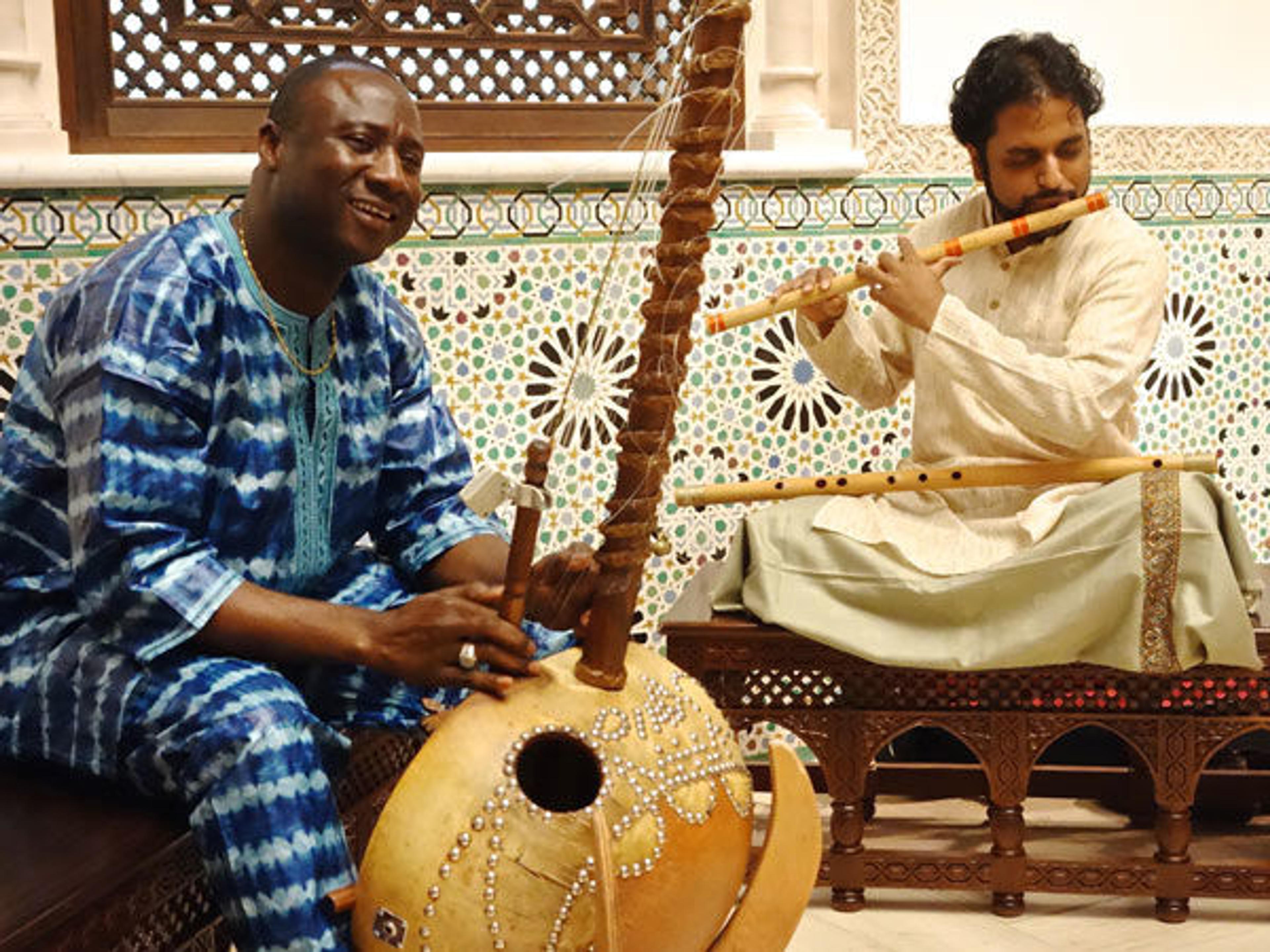Anatomy of a Gallery: Setting the Stage for the Moroccan Court Music Series

View of gallery 456, the Patti Cadby Birch Court
«While growing up, I often visited the Astor Chinese Garden Court as a way of wrapping up my days at the Met. The gallery's cool light and water provided a setting for me to wind down and reflect on what was always a stimulating, art-filled itinerary. Now as a staff member in the Museum's Department of Islamic Art, I was reminded of those early visits the first time I entered the Patti Cadby Birch Court, in 2011. Though much smaller than the Astor Court, the gallery's light and water stirred that same sense of tranquility in me.»
It is in this serene space that our department has inaugurated the Moroccan Court Music Series—a program of live concerts featuring performers whose music hails from countries across the Middle East and South Asia. Many of the performances are planned to enhance the themes of special exhibitions or events, and greatly inspire connections between the visual art of these galleries and the musical tradition of those regions represented. Beyond providing context for the objects of nearby galleries, the music highlights the court itself, which is, in fact, its own work of art.
The gallery is a combination of acquired works and contemporary craftsmanship. Four freestanding Nasrid-period columns hail from the Alhambra, while the walls, the remaining columns, and the ceiling were constructed onsite by Arabesque, a company of Moroccan craftsmen. Their design is inspired by two fourteenth-century madrasas of Fez (the al-'Attarin and the Bu-'Inaniyya), both constructed under the rule of Marinid sultans. Madrasa, meaning school, originally housed students; in the case of the al-'Attarin, it housed those engaged at the Qarawiyyin Mosque nearby. Surrounded by dormitories, its courtyard was conceived as a public gathering space for students, fostering community within the school while offering privacy from the outside world.
While the Met's Moroccan Court is not exactly surrounded by scholars' dormitories, it is nestled within a labyrinth of galleries which serve as study halls of their own breed. Many are bustling with visitors, and all are replete with artworks, labels, and wall panels. (In contrast, the Moroccan Court has no labels, but instead features a touchscreen monitor just outside the gallery that displays videos and interactive imagery which give insight into the room's construction.) It is amidst this stimulating context that the court functions as a respite, inviting passersby to pause during their hectic itineraries.
Water, symbolic of vitality, bubbles continuously from the seqqaya (central fountain), and the ceiling is illuminated by a soft light which suggests the sun. Though it is perpetually "daytime" in the Moroccan Court, the moucharaby (wooden screen) has carvings that would have cast shadows as the sunlight moved over the open top of a traditional court. During the performances in which Drop-in Drawing is also planned elsewhere in our galleries, the music travels through these screens to accompany the artists at work.

Yacouba Sissoko (left) and Jay Gandhi (right) perform in the Moroccan Court. Photo courtesy of Catherine Katona
During the performances, I have found that the music resonates with the room's visual qualities. Most striking to me is the way longer compositions (sometimes more than thirty minutes) reflect the endless repetition of the wall's patterning. The pattern, known as tastir, is composed of seventy different shape types, each individually cut and assembled into an array of eight- and sixteen-pointed stars. Like the music, this repeating geometry is meant to be meditative and to inspire deep thought.
The next performance in the 2015 Moroccan Court Music Series will take place on Friday, May 1, with a program featuring Alif Laila, Anubrata Chatterjee, and Shane Shanahan performing on the sitar, tabla, riq, tombak, and daf. This program is presented in conjunction with the exhibition Sultans of Deccan India, 1500–1700: Opulence and Fantasy, on view in gallery 199 through July 26, 2015.
The remaining 2015 dates of the Moroccan Court Music Series are listed below; further information will be posted closer to the date:
Friday, June 19, 6:30–7:30 p.m.—one of many offerings of the MetFridays Gallery Event—Celebrate India!
Friday, September 18, 6:00–7:00 p.m.
Friday, November 13, 6:00–7:00 p.m.
There will also be a performance in the Moroccan Court on Sunday, May 17, from 2:00 to 4:00 p.m., part of the Senses of Springtime: Celebrate India! Museum-wide festival.
The Moroccan Court Music Series is made possible by the Doris Duke Foundation for Islamic Art and The Persepolis Foundation.
Related Links
Stein, Achva Benzinberg. Morocco: Courtyards and Gardens. New York: The Monacelli Press, 2007.
MetMedia: Building the Moroccan Court
Julia Rooney
Julia Rooney is an assistant for administration in the Department of Islamic Art.